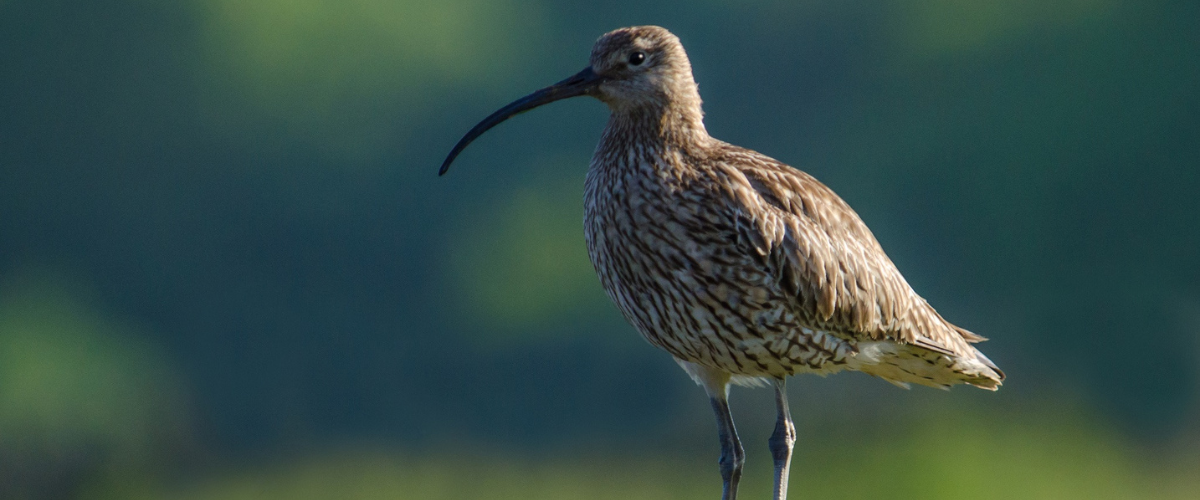Curlew Connections
Written by Lisa Heledd Jones, Communities and Engagement Officer, Curlew Connections Wales.
Nain kept meticulous diaries full of detail on the weather, farming activities and family ailments from our small farm in Glyndyfrdwy. Each year, without fail, she would record the first time she heard ‘chwibanogl y mynydd’ (mountain whistler).
The whistling was the call of the curlew – an iconic bubbling sound that for generations has signalled the shifting season as this wading bird travels inland to find their ideal spot to nest. This may be rough pasture, heather moorland, farmland and wetlands. However, the nesting areas embedded within these loyal birds are no longer the safe place they need. Pressures on landscape, earlier forage cuts to support a cheap food market and lack of appropriate habitats have led to a stark and drastic decline in curlew. Since 1993, the population in Wales has fallen by over 80% and is falling by 5% every year, with country level extinction threatened by 2033.
The Clwydian Range & Dee Valley National Landscape is working with farmers and local communities to do something about this tragic trajectory. ‘Curlew Connections Wales’ is a three year Curlew Recovery partnership project working with Bannau Brycheiniog and GWCT funded by Welsh Government through the Heritage Lottery Fund.
In our Important Curlew Area (ICA 5) we have a dedicated Curlew and People Officer – Sam Kenyon – who is leading on the project for the National Landscape. Sam, who is a farmer herself, knows how significant it is that we bring everyone together if we’re going to make a difference to this bird.
For our team of dedicated staff and volunteers, the call is what we’ve been listening out for over the last few weeks – working diligently to monitor and record how many birds have returned so that we can work with landowners and farmers to protect their nests from some of the dangers that so often befall their vulnerable eggs and chicks. When a nest is found, we can place electric fencing around it in under fifteen minutes and research shows that this can triple the chances of hatching success.
By August, we will have a clearer picture of how many pairs are in our landscape and where to continue our focus and efforts. As the project develops we hope to find solutions, working with our farmers and local communities. Perhaps diaries will once again mention the mountain whistler. As a pupil of Carrog school said in a recent workshop ‘We have to try and save them, or by the time I’m a grown up, they’ll all be gone’.
If you would like to join our mailing list sign up here.
If you wish to support the project or know more please contact samantha.kenyon@denbighshire.gov.uk. You can record any sightings on the Cofnod website https://www.cofnod.org.uk/Recording or LERC Wales app – https://www.lercwales.org.uk/app.php.
Written by Lisa Heledd Jones, Communities and Engagement Officer, Curlew Connections Wales.
[instagram-feed feed=1]


